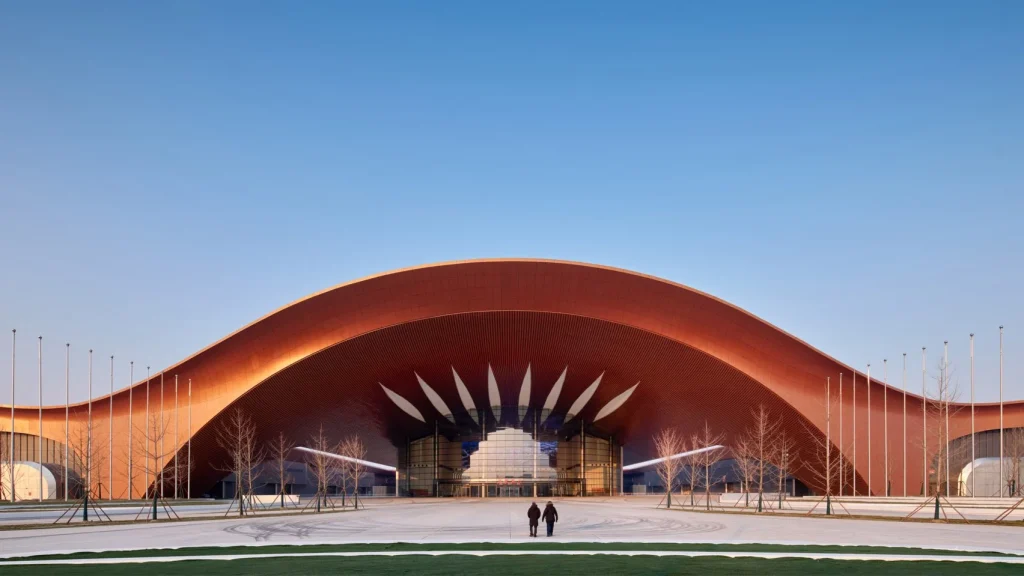UK-based Zaha Hadid Architects has designed the Capital International Exhibition and Convention Centre (CIECC) in Beijing, touted as the city’s largest convention centre. The building features fluid shapes, ribbon-like bridges, and a copper-coloured aluminium facade.
Located in Beijing’s Shunyi District, the CIECC contains nine exhibition halls, three entrance reception areas, a 9,000-seat conference centre, and a hotel. The centre’s design aims to visually reduce its scale, with curved and pleated facades and a large arch spanning the main entrance.
An outdoor courtyard acts as a central spine, connecting the facilities. Four rectangular exhibition halls sit on one side of the courtyard, and five on the other, enclosed on the ground floor by curving glass walls. Bridges informed by ribbons span diagonally over the courtyard to connect the upper-level spaces.
Notably, the project was developed in collaboration with Beijing Institute of Architectural Design, which served as the executive architect. The structural engineering was handled by Beijing Institute of Architectural Design, while China Construction Second Engineering Bureau and Beijing Construction Engineering Group acted as the general contractors. The unique facade engineering was provided by China Academy of Building Research.
“Conceived as ‘ribbons’ that weave together all the facilities, bridges above this central courtyard also connect the exhibition halls, conference centre, and hotel,” said Zaha Hadid Architects. The centre’s design enables adaptable, column-free spaces for the exhibition areas.





